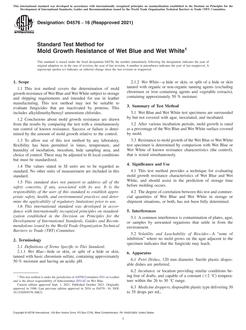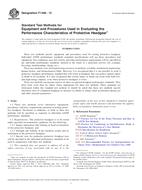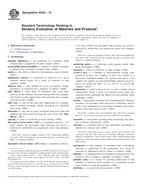1.1 This test method covers and is applicable to gasolines and gasoline-oxygenate blends with a vapor pressure range from 35 to 100 kPa (5 to 15 psi) (see Note 2). This test method, a modification of Test Method D 323 (Reid Method), provides two procedures to determine the vapor pressure (Note 1) of gasoline and gasoline-oxygenate blends. Note 0Because the external atmospheric pressure is counteracted by the atmospheric pressure initially present in the air chamber, this vapor pressure is an absolute pressure at 37.8°C (100°F) in kilopascals (pounds-force per square inch). This vapor pressure differs from the true vapor pressure of the sample due to some small vaporization of the sample and air in the confined space.
Note 0
Vapor pressure of gasoline or gasoline-oxygenate blends below 35 kPa (5 psi) or greater than 100 kPa (15 psi) can be determined with this test method but the precision and bias (Section ) do not apply. For materials with a vapor pressure greater than 100 kPa (15 psi), use a 0 to 200 kPa (0 to 30 psi) gauge as specified in the annex of Test Method D 323.
1.2 Some gasoline-oxygenate blends may show a haze when cooled to 0 to 1°C. If a haze is observed in 9.4, it shall be indicated in the reporting of results. The precision and bias statements for hazy samples have not been determined (see Note 7).
1.3 The values stated in SI units are to be regarded as the standard. The values given in parentheses are for information only.
This standard does not purport to address all of the safety concerns, if any, associated with its use. It is the responsibility of the user of this standard to establish appropriate safety and health practices and determine the applicability of regulatory limitations prior to use.
Product Details
- Published:
- 08/01/2006
- Number of Pages:
- 8
- File Size:
- 1 file , 140 KB
- Redline File Size:
- 2 files , 270 KB


